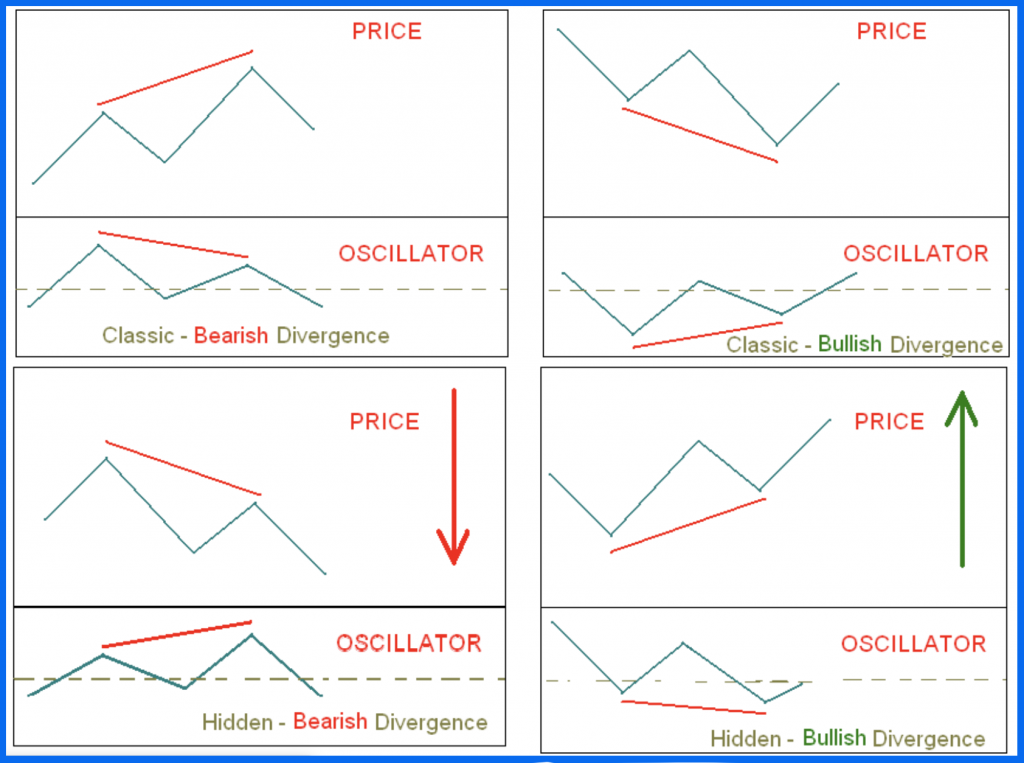The MACD (Moving Average Convergence / Divergence) is an indicator that is used for technical analysis to predict fluctuations and provide estimates of asset prices. Gerald Appel first described the indicator in 1979 in the book “Systems and Forecasts”. In 1986 a histogram was added to the MACD by Thomas Esprey.
Entry points and Signals
As the MACD is both an oscillator and an indicator that follows trends, it gives different types of market entry signals. The MACD indicator gives the following basic signals:
- The zero line crossover
- The signal line crossover
- Divergence
Crossing the zero line
When the MACD line crosses the zero line of the indicator, the signal is interpreted differently depending on the direction in which the MACD line is moving when it crosses:
- If the MACD line intersects the zero line while moving downward, the signal is bearish.
- If the MACD line intersects the zero line while moving upward, the signal is bullish.
Crossing the signal line
This signal is the most frequently and commonly used and it is seen when the MACD line and the signal line cross. Depending on how the lines intersect, it has different meanings:
- If the MACD line intersects the signal line while moving downward, the signal is bearish.
- If the MACD line intersects the signal line while moving upward, the signal is bullish.
As the MACD histogram displays the difference between the MACD line and the signal line of the indicator, it will display a zero value.
Divergence

Divergence is the difference between the direction of the price chart and the indicator. A bullish divergence is created when a lower low on the price chart is not supported by a lower low on the MACD, while a bearish divergence is created when a price chart records a higher high, but the MACD line forms a lower high.
This type of signal is typical for all oscillators, including the MACD. Generally, a divergence occurring indicates that a movement is completing, i.e. the trend is weakening, and this may lead to a reversal or a strong correction. As with most other signals, the MACD signal will be stronger the larger the price chart’ timeframe.
Conclusions
When a divergence is formed, it is not required for two local minima / maxima to be present. There could in fact be three or more. This results that the exact point of reversal can’t be determined in this way. A trend may not reverse, but it could simply flatten. It should be noted therefore that a convergence or a divergence only indicates that the trend’s strength is slowing. A convergence or a divergence can however be used to confirm various technical analysis patterns, such as a head and shoulders or double top.